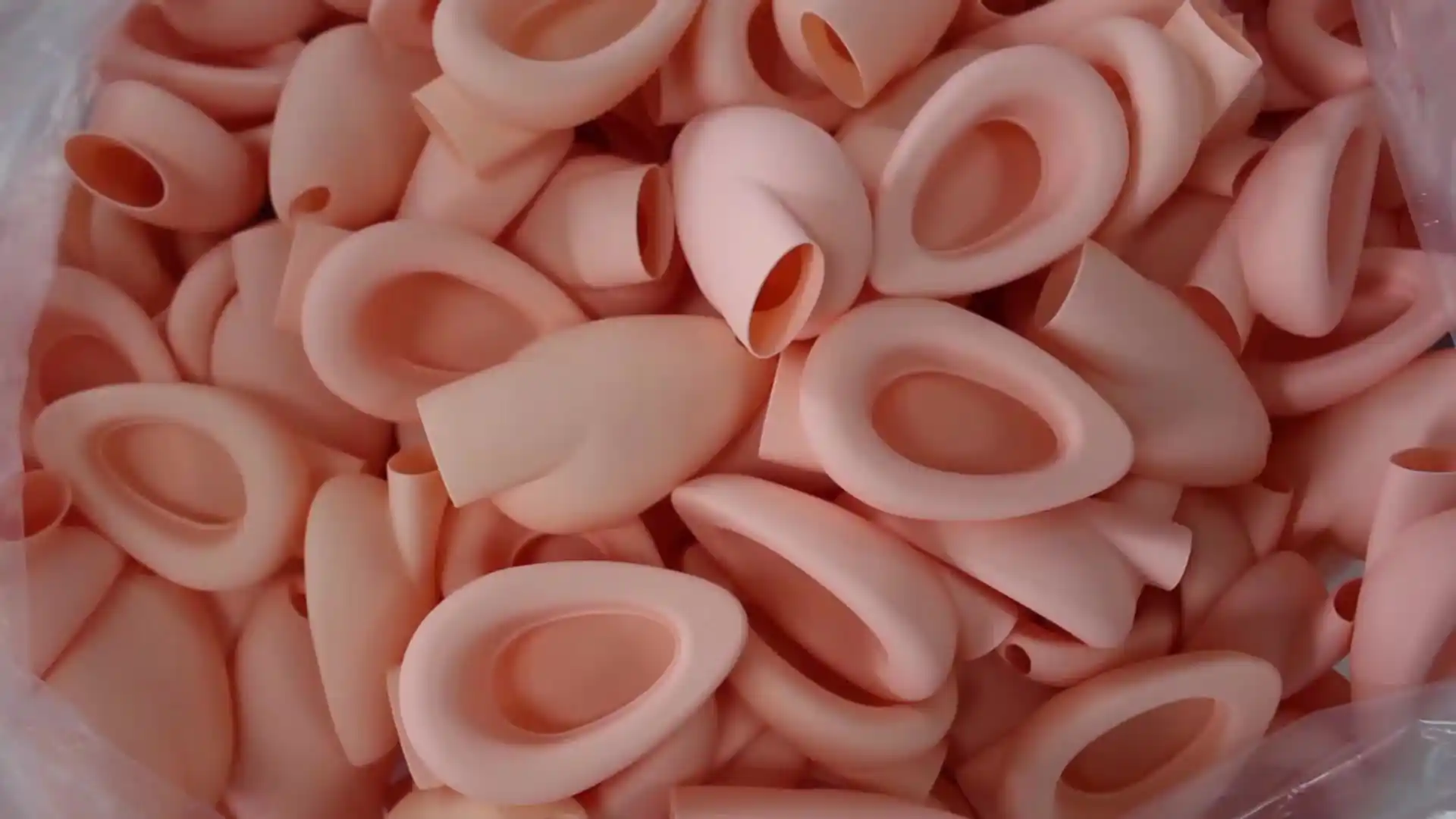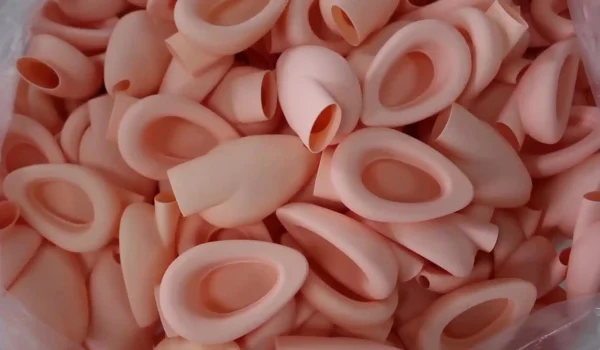The rubber injection molding process is key in today’s manufacturing. It lets us make complex products with great precision. This method works with many materials, including rubber, to create top-notch items.
It involves pushing rubber into a mold to form a specific shape. This makes it perfect for making products with detailed designs.
Injection molding for rubber products is getting more popular. It’s great for making high-quality items with complex designs. This method is cost-effective and flexible, making it a favorite among manufacturers.
We’ll look into the rubber injection molding process, its uses, and its benefits. We’ll also talk about its limitations and future trends. This will show how important injection molding is for making rubber products.
Understanding Injection Molding of Rubber
Injection molding is a versatile method for making many products, including those from types of rubber. It involves pouring molten material into a mold. The material then cools and solidifies into the desired shape. When working with rubber, it’s important to consider the material’s properties and how it’s processed.
It’s key to know the differences between rubber and plastic injection molding. Rubber has unique properties that need special handling. Understanding these differences helps in achieving the best results in rubber injection molding.
What is Injection Molding?
Injection molding is a detailed process with several steps. It starts with picking the right types of rubber. Then, the rubber is melted and injected into a mold. Once it cools, it takes the mold’s shape.
How Does Injection Molding Work?
The process includes designing the mold, preparing the material, and making the product. The mold must handle high pressures and temperatures. This ensures the rubber is evenly distributed and cools right. The injection molding method can make a variety of products, from simple parts to complex ones.
Differences Between Rubber and Plastic Injection Molding
The main differences are in material properties and how they’re processed. Rubber needs higher temperatures and pressures than plastic. The mold design must also be adjusted for these differences. Knowing these differences is vital for the best results in injection molding rubber products.
Types of Rubber Used in Injection Molding
Rubber is a versatile material, available in natural and synthetic forms. In injection molding, the rubber type chosen is key. Each rubber type has its own set of properties, like elasticity and resistance to heat and chemicals. These properties make them fit for various uses.
The choice of injection molding materials depends on the product’s needs. For example, natural rubber is great for its flexibility. Synthetic rubber, on the other hand, is better for handling heat and chemicals. Knowing the differences in rubber types is vital for picking the right one for molding.
Here are some common rubber types used in injection molding:
- Natural rubber
- Synthetic rubber, such as styrene-butadiene rubber (SBR) and nitrile rubber (NBR)
- Thermoplastic elastomers (TPE)
The table below summarizes the properties of these rubber types:
| Rubber Type | Elasticity | Heat Resistance | Chemical Resistance |
|---|---|---|---|
| Natural Rubber | High | Low | Low |
| Synthetic Rubber (SBR) | Medium | Medium | Medium |
| Synthetic Rubber (NBR) | Low | High | High |
Benefits of Injection Molding for Rubber Products
Rubber injection molding has many benefits, making it a top choice for making rubber products. It allows for creating complex shapes and designs that other methods can’t. This is thanks to the injection molding benefits that make it easy to make detailed designs.
The rubber molding advantages also include saving money. It’s great for making lots of rubber products like seals and gaskets. Plus, it ensures parts are made with the same quality and precision every time.
Some main benefits of using injection molding for rubber products are:
- It’s very efficient, making lots of products quickly.
- It’s flexible, allowing for complex designs.
- It’s cost-effective, saving on materials and production.
Overall, injection molding is a favorite among manufacturers in many fields. It helps make high-quality rubber products with detailed designs. It also cuts down on costs and boosts efficiency.
Limitations of Rubber Injection Molding
Rubber injection molding is a complex process with many benefits. Yet, it also has some key limitations. One major rubber molding limitation is the high cost of specialized tooling and equipment. This can be a big expense for companies, including small and medium-sized ones.
Another challenge is the injection molding challenges related to rubber’s material properties. Rubber can be hard to work with, needing careful selection and processing. This can increase production time and costs.
- Material constraints: Rubber has limited thermal stability, which can affect its performance in certain applications.
- Complexity of tooling: The tooling required for rubber injection molding can be complex and expensive to create.
- Time and cost of mold creation: The creation of molds for rubber injection molding can be time-consuming and costly.
Despite these challenges, rubber injection molding is a popular choice for many industries. It’s known for producing high-quality products with complex geometries. By understanding the rubber molding limitations and injection molding challenges, companies can better navigate the process. This helps them optimize their production workflows.
The Process of Rubber Injection Molding
The rubber injection molding process has several key steps. These steps are vital for making high-quality products. The injection molding process starts with getting the mold and machine ready.
There are a few important rubber molding steps. These include:
- Pre-molding preparation: This step involves preparing the mold and the injection molding machine.
- The injection phase: During this phase, the rubber material is injected into the mold.
- Cooling and ejection: After the injection phase, the rubber material cools and solidifies, and the molded product is ejected from the mold.
The injection molding process needs careful attention to detail. This ensures the final product meets the required standards. By following these rubber molding steps, manufacturers can create high-quality products that meet customer needs.
Applications of Injection Molded Rubber Products
Injection molded rubber products are used in many industries. They are great for parts that need to be flexible, strong, and can handle heat and chemicals well.
The car industry uses them a lot. They make seals, gaskets, and hoses for cars. These parts help cars run smoothly, and rubber makes them reliable and effective.
Key Industries
- Automotive: seals, gaskets, hoses
- Healthcare and Medical Devices: medical tubing, seals, and gaskets
- Consumer Goods and Accessories: household appliances, sporting goods, and toys
Many industries get benefits from these rubber products. They can be made to fit specific needs. This makes them key in many manufacturing processes.

Factors to Consider in Rubber Injection Molding
Rubber injection molding is a complex process. It needs careful thought about several factors to make high-quality products. When it comes to injection molding factors, controlling temperature, setting the right pressure, and checking material compatibility are key.
Some important rubber molding considerations include:
- Temperature control: The processing temperature must be carefully controlled to achieve the desired material properties and product quality.
- Pressure requirements: The pressure requirements for rubber injection molding are typically higher than those for plastic injection molding.
- Material compatibility: The compatibility of the rubber material with the mold and other components is essential to ensure a smooth molding process.
By thinking about these injection molding factors and rubber molding considerations, manufacturers can improve their rubber injection molding processes. This way, they can make high-quality products with consistent properties.
| Factor | Importance | Description |
|---|---|---|
| Temperature control | High | Critical for achieving desired material properties |
| Pressure requirements | Medium | Affects product quality and mold durability |
| Material compatibility | High | Essential for smooth molding process and product quality |
Comparing Injection Molding to Other Rubber Processing Methods
Injection molding is just one way to process rubber. To find the best method, we need to compare it with others. This includes looking at alternatives like compression molding, transfer molding, and extrusion.
When comparing, we should think about how much is made, the rubber’s properties, and the cost of equipment. For example, compression molding works well for making a few to a few hundred parts. Injection molding is better for making thousands of parts.
Compression Molding
Compression molding presses rubber into a mold to shape it. It’s great for making big, complex parts.
Transfer Molding
Transfer molding moves rubber into a mold through channels. It’s precise and good for small, detailed parts.
Extrusion vs. Injection Molding
Extrusion pushes rubber through a die to make long shapes. Injection molding fills a mold with material to make one part at a time. Choosing between extrusion and injection molding depends on your needs, like how much you make and the rubber’s quality.
Innovations in Rubber Injection Molding Technology
The rubber injection molding field is always changing. This is thanks to injection molding innovations that make products better, cut costs, and help the environment. New materials and processes have come out because of these advancements in rubber molding technology.
Some key areas of innovation include:
- Advancements in materials, such as the use of sustainable and recyclable materials.
- Automation and robotics, which improve efficiency and reduce labor costs.
- Eco-friendly practices, such as reducing energy consumption and waste.
Advancements in Materials
Scientists are working on new materials. These materials are stronger, can handle heat and chemicals better. These changes in rubber molding technology will greatly affect the industry.
Automation and Robotics
Automation and robotics are becoming more common in injection molding innovations. They make things more efficient and save money on labor. This trend will keep growing, with more companies using automated systems.
| Technology | Benefits |
|---|---|
| Automation | Improved efficiency, reduced labor costs |
| Robotics | Increased precision, reduced waste |
Future Trends in Rubber Injection Molding
The future of rubber injection molding is bright. There’s a growing need for green solutions, custom products, and quick production. To keep up, makers must follow the latest trends and innovations.
Demand for Sustainable Solutions
People are now more aware of how their actions affect the planet. This awareness is pushing for eco-friendly ways to make things. Companies are answering by using recycled or bio-based materials in their molding.
Customization and Short-Run Production
There’s a big want for unique and small batches of products. New tech and digital tools are helping makers offer more custom and quick production. This meets the demand for personalized items.
Growing Applications in Tech and Electronics
Technology keeps getting better, and so does the need for flexible, strong rubber parts. The tech and electronics world will need more of these parts. Rubber injection molding will be key in making them.




